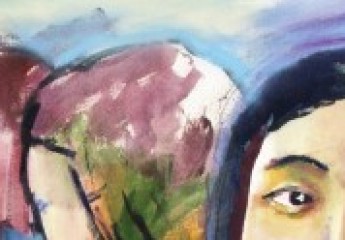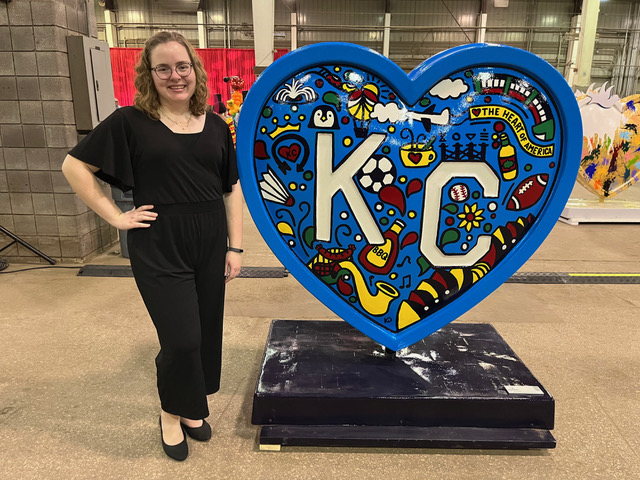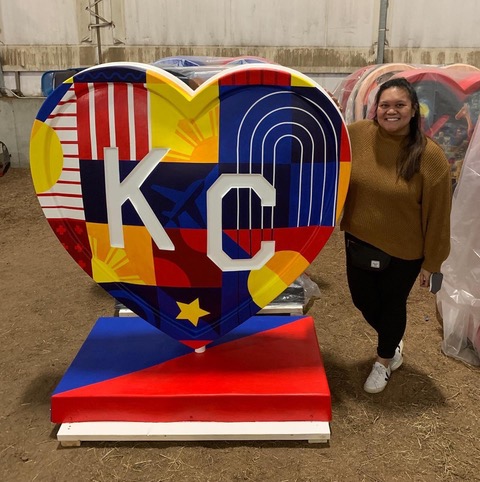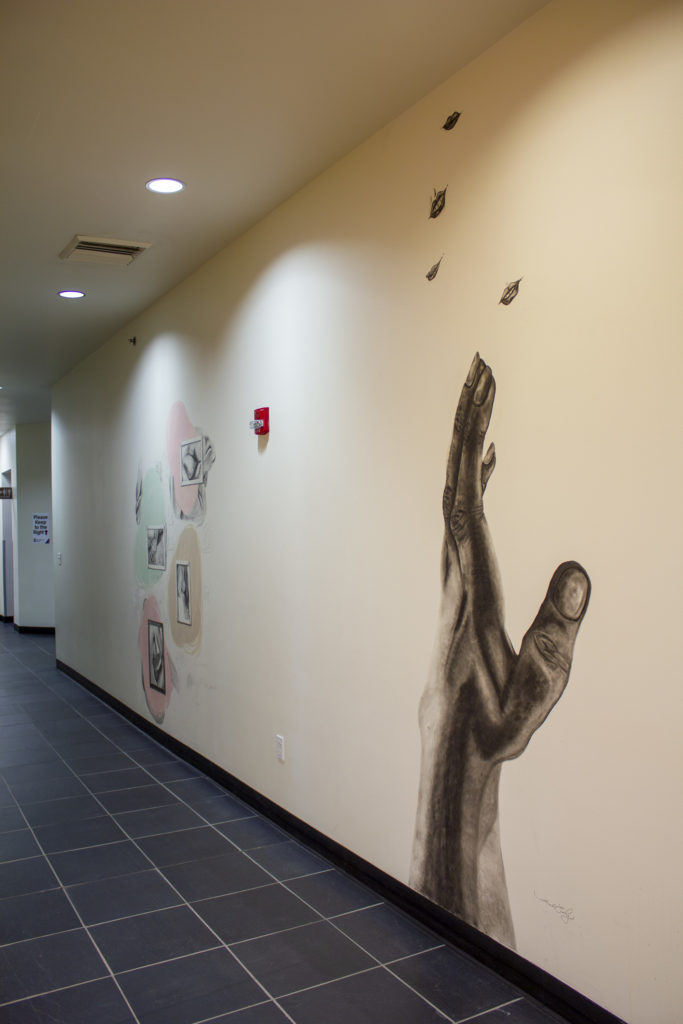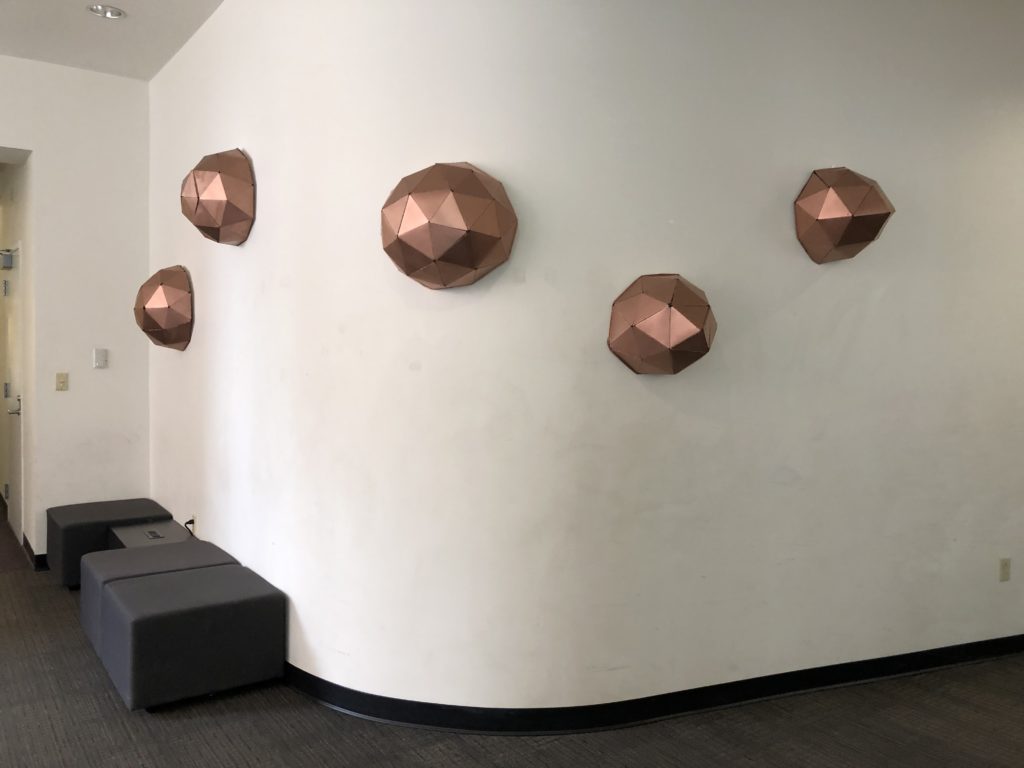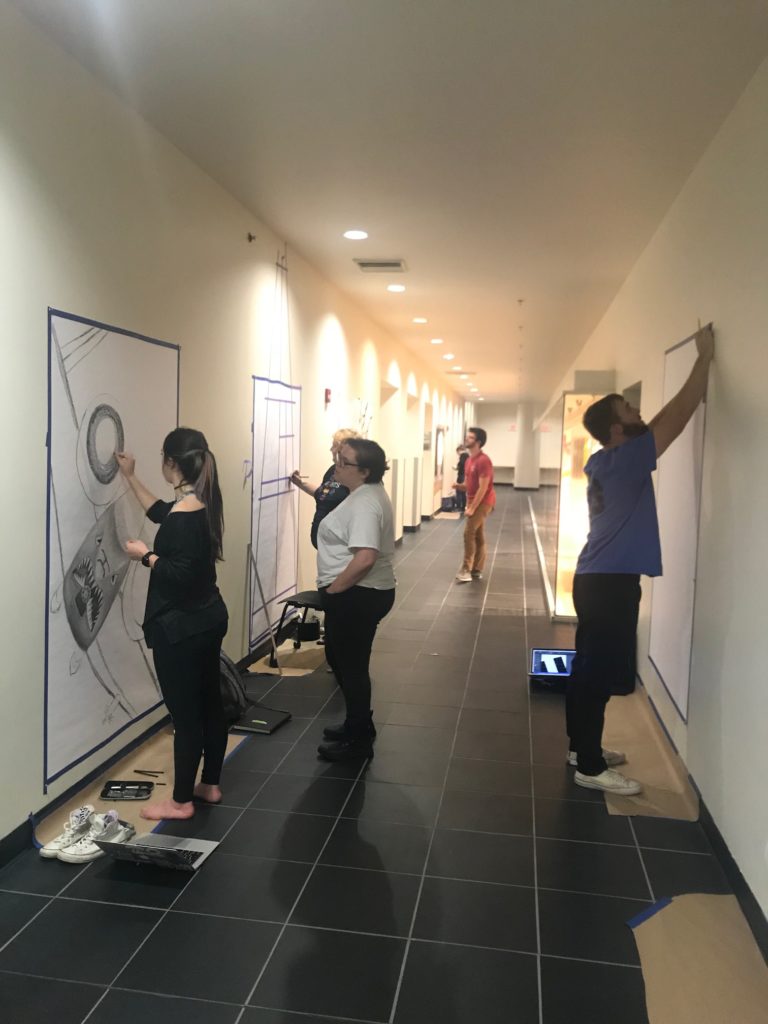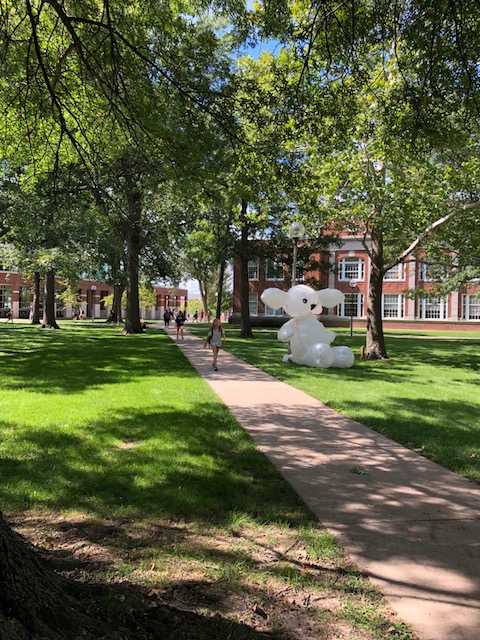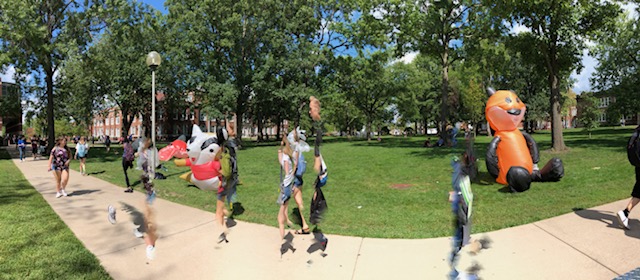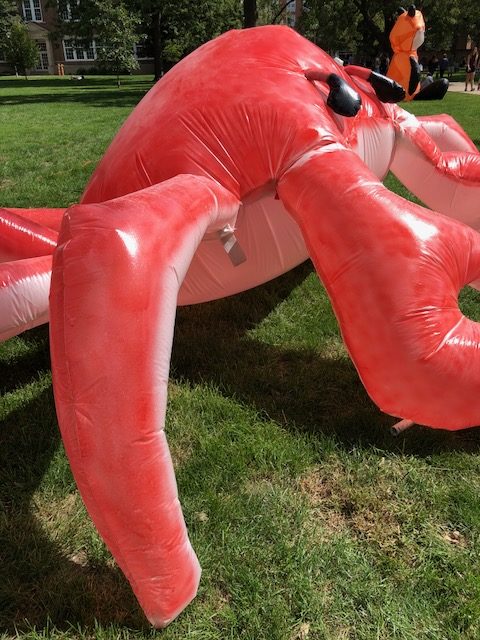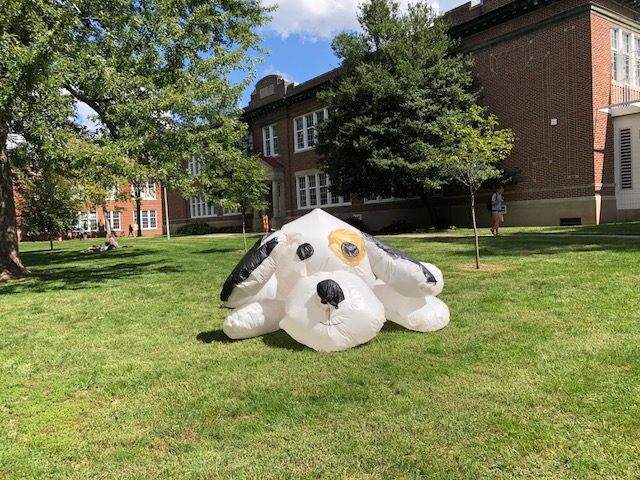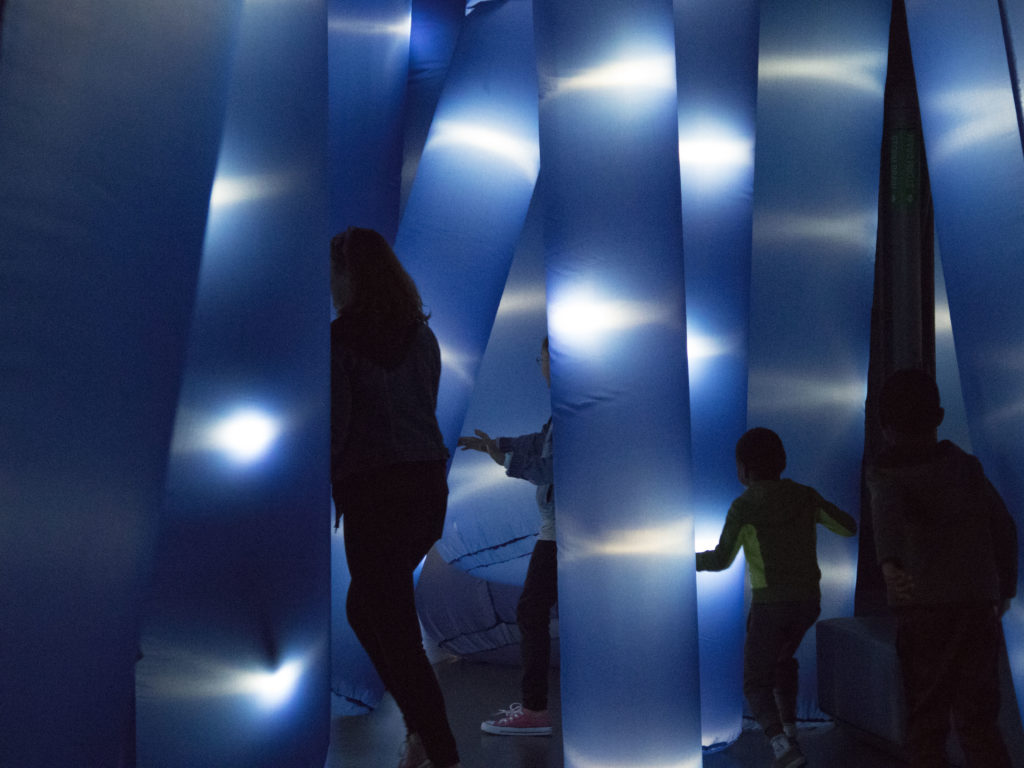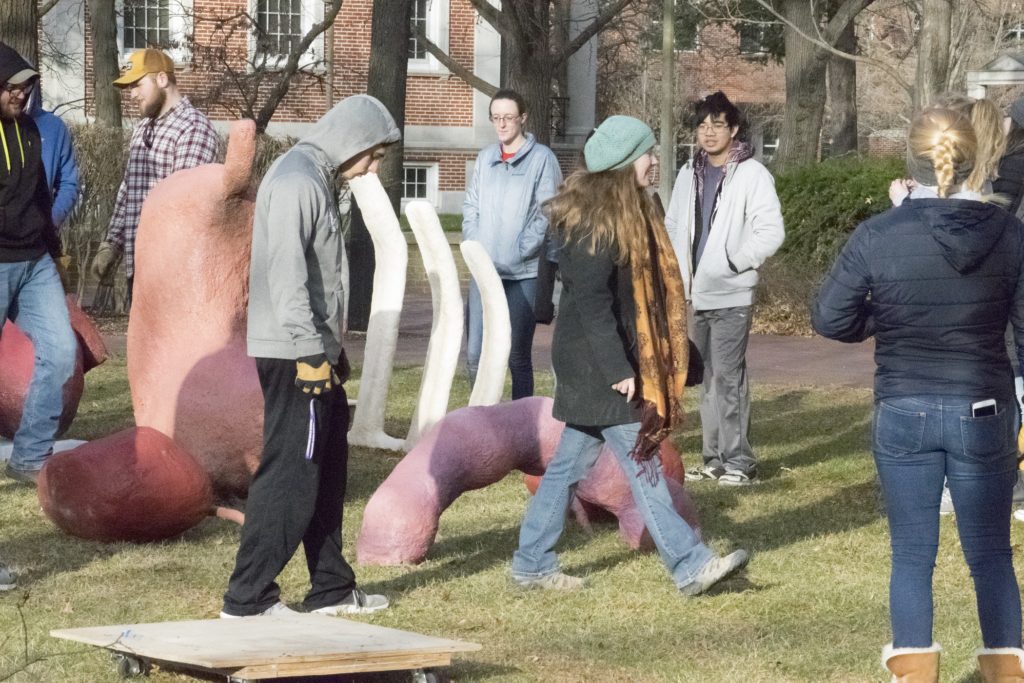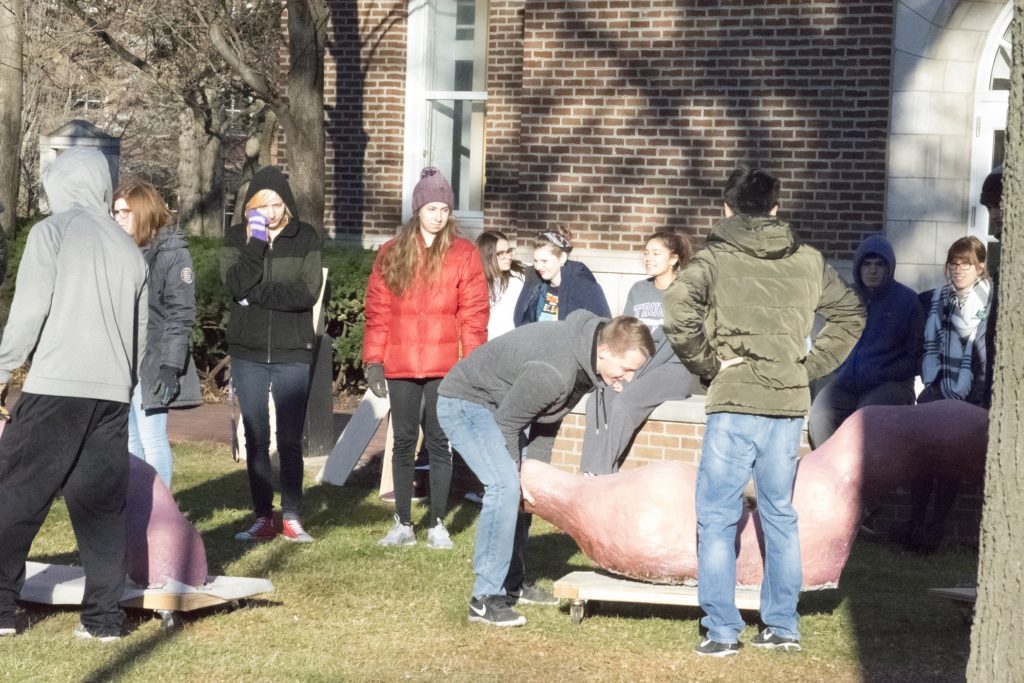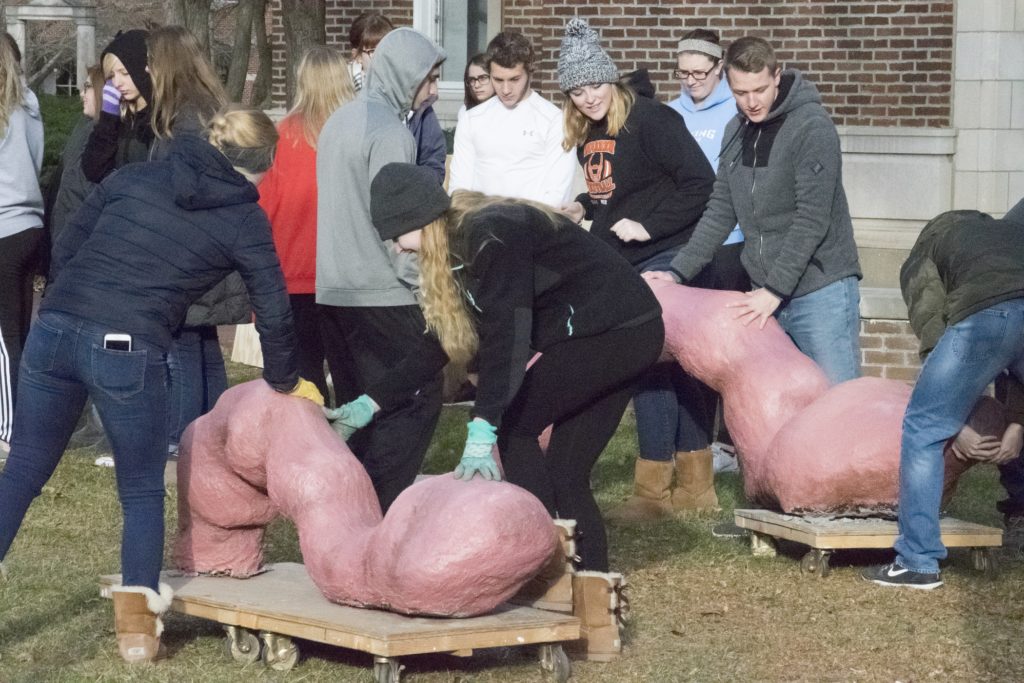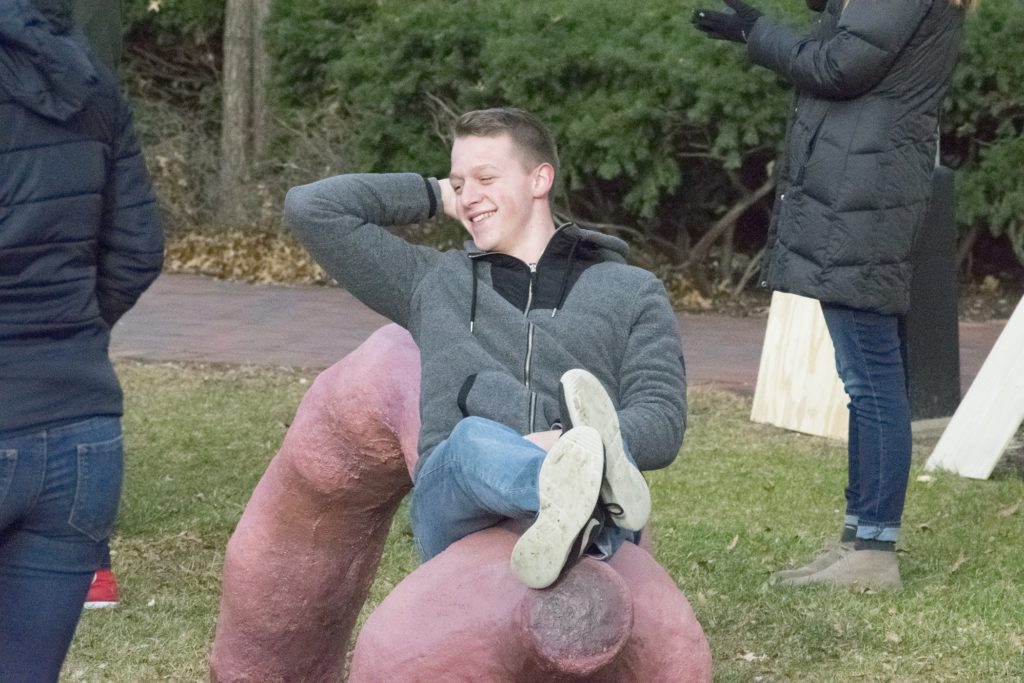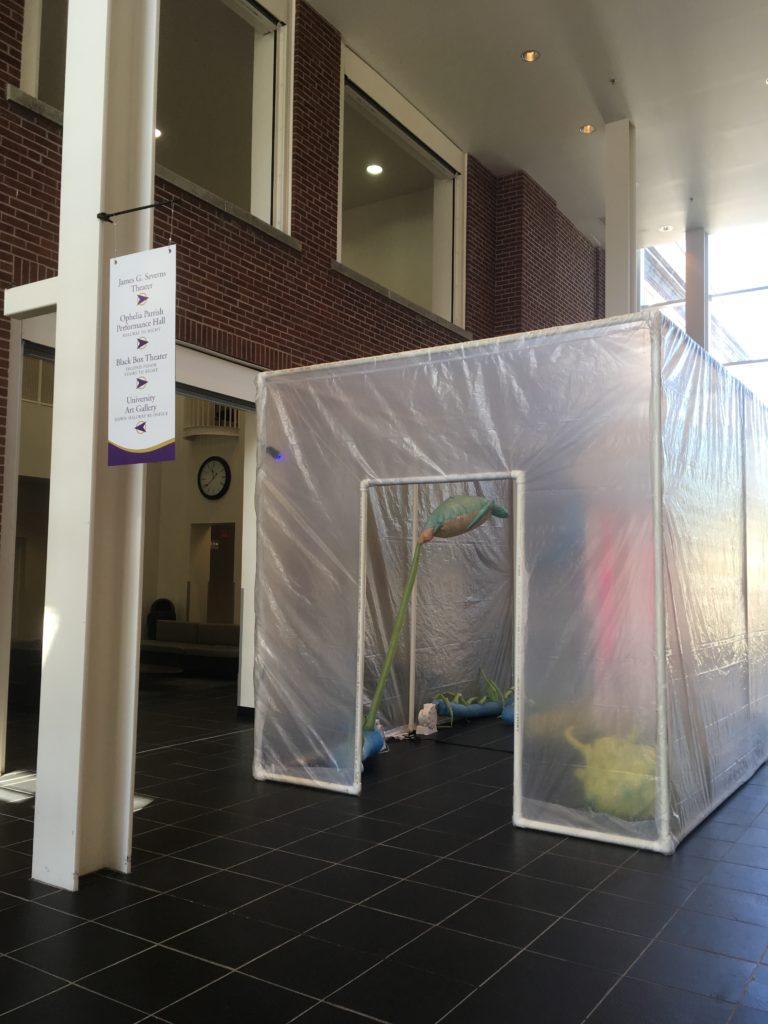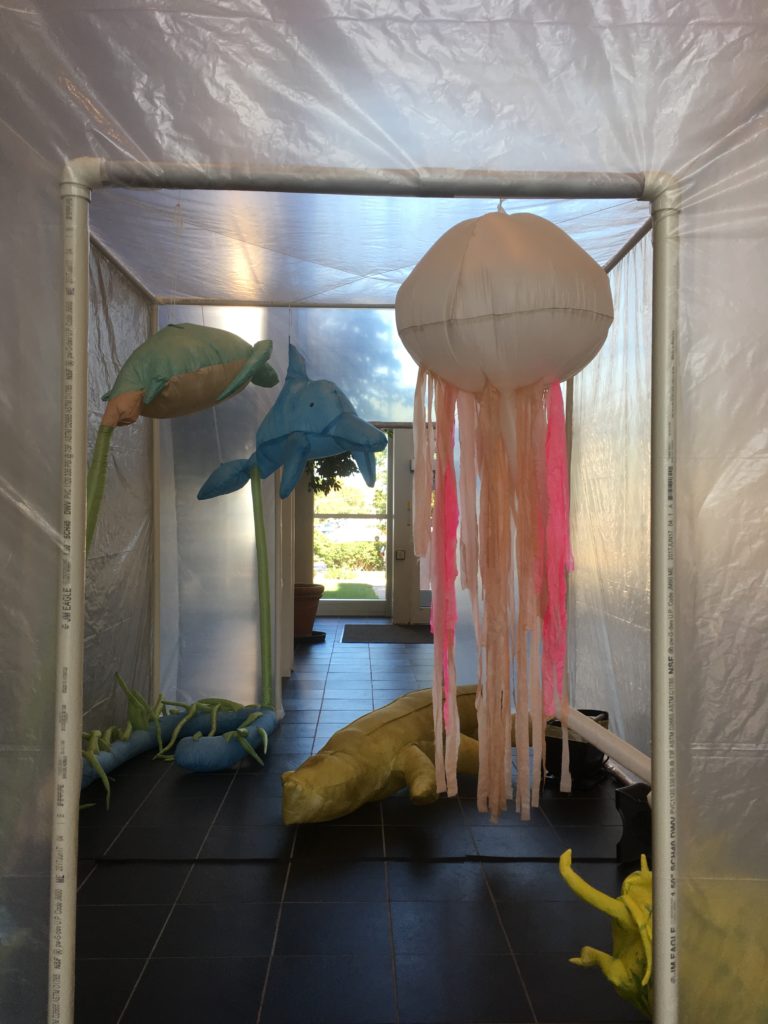Public Art
Students making Site Specific Art
Intermediate and Advanced Drawing students have created large, spite-specific artworks drawn directly on the walls in Ophelia Parrish. The work can be viewed through April 15th in the hallway adjacent to the Truman State University Gallery. Come check out the exhibition! And if you haven’t seen it yet, visit the Juried Student Show in the gallery!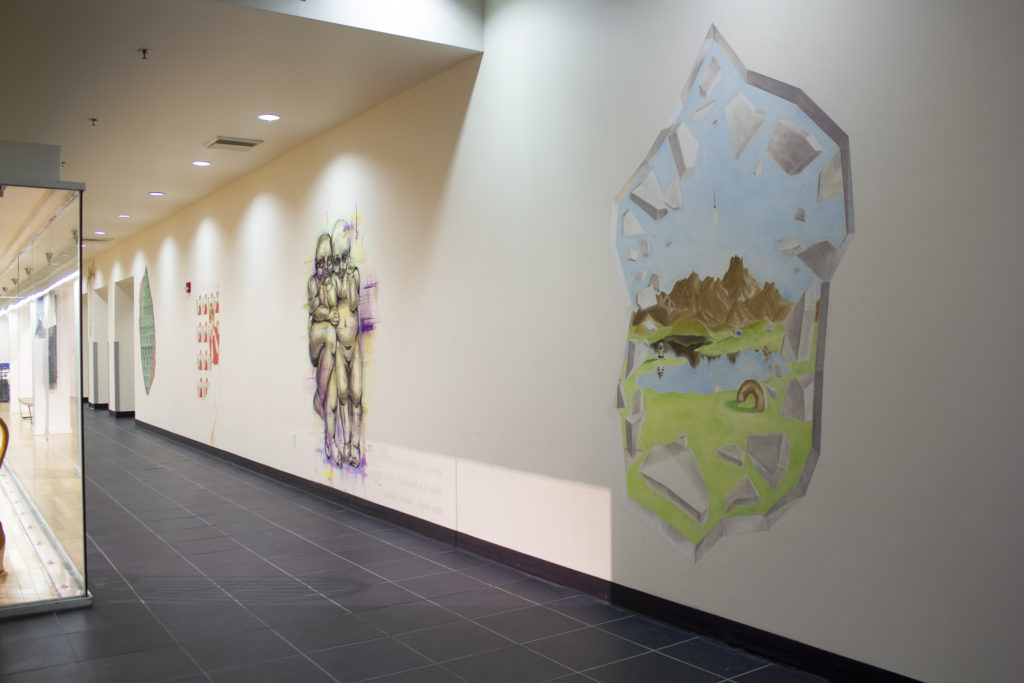
Everybody Loves a Parade!
Danielle Yakle’s advanced sculpture classes celebrated their final project by having a parade from campus to downtown. The assignment was to create an outfit/costume that changed their body shape and incorporated programmed lights. Here are some pictures of this event, accomplished during a break between spring rain showers. 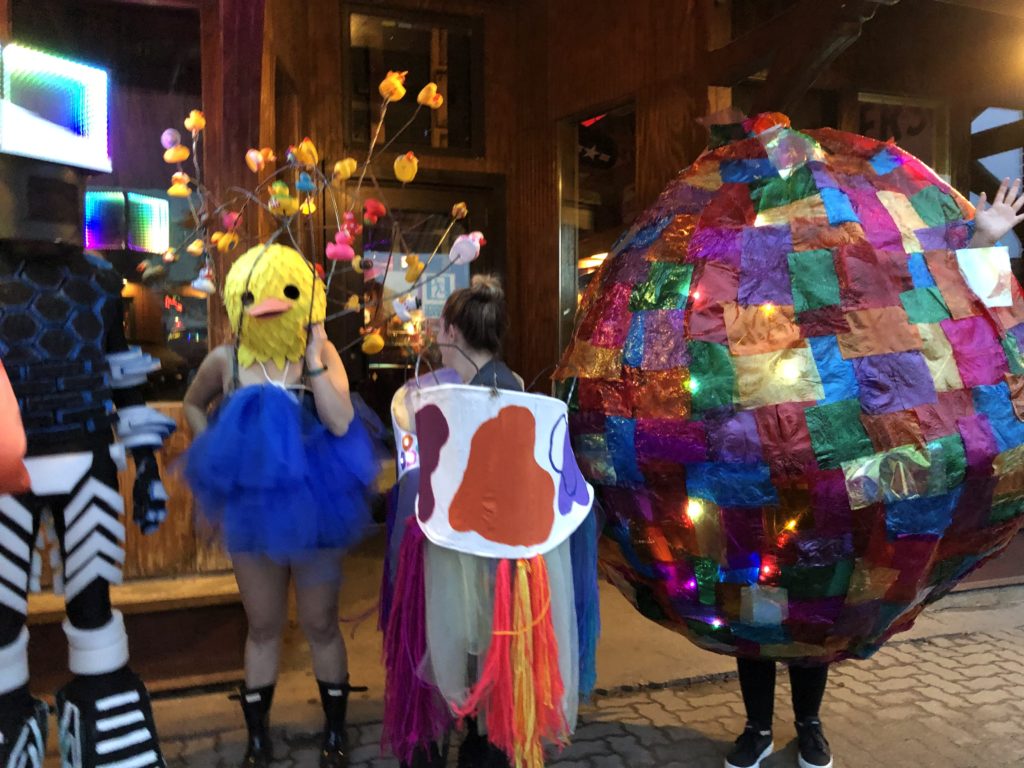
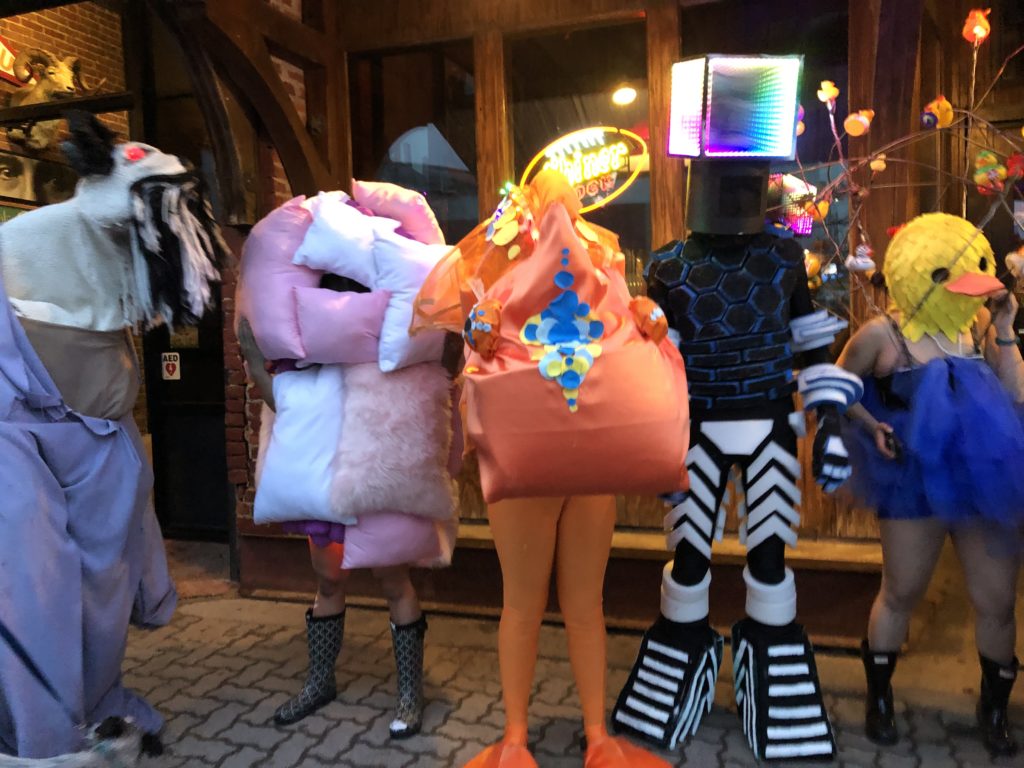
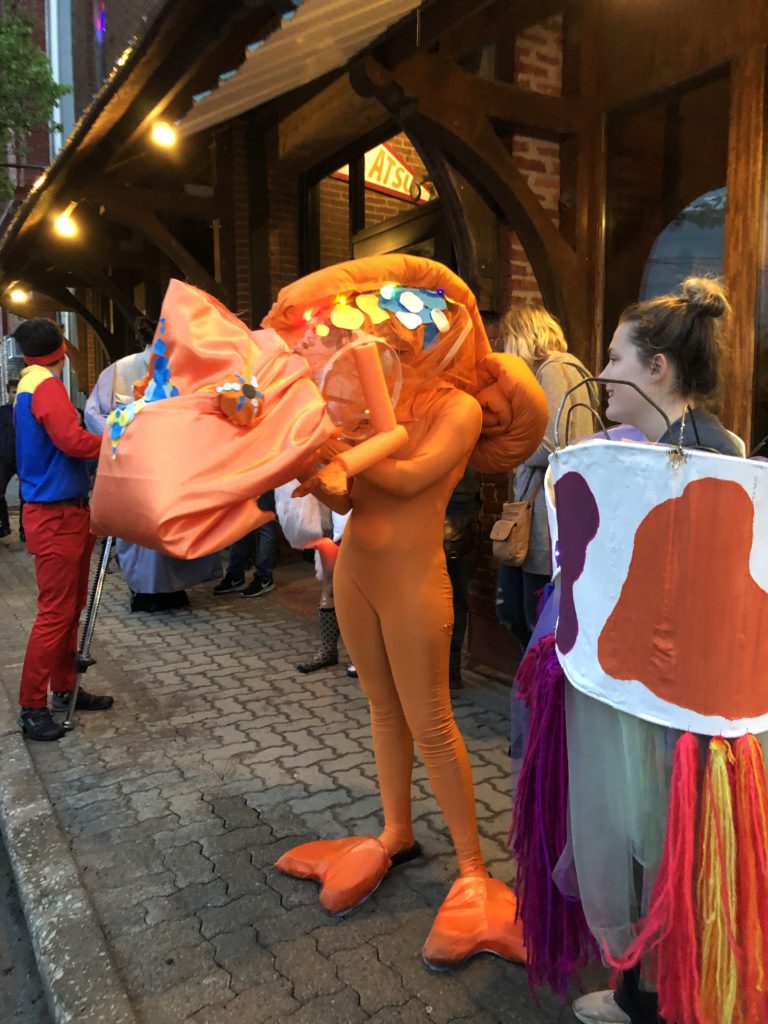
Where is the art? Just around the corner!
One of the joys of being in an art program is being surrounded by art of all kinds.
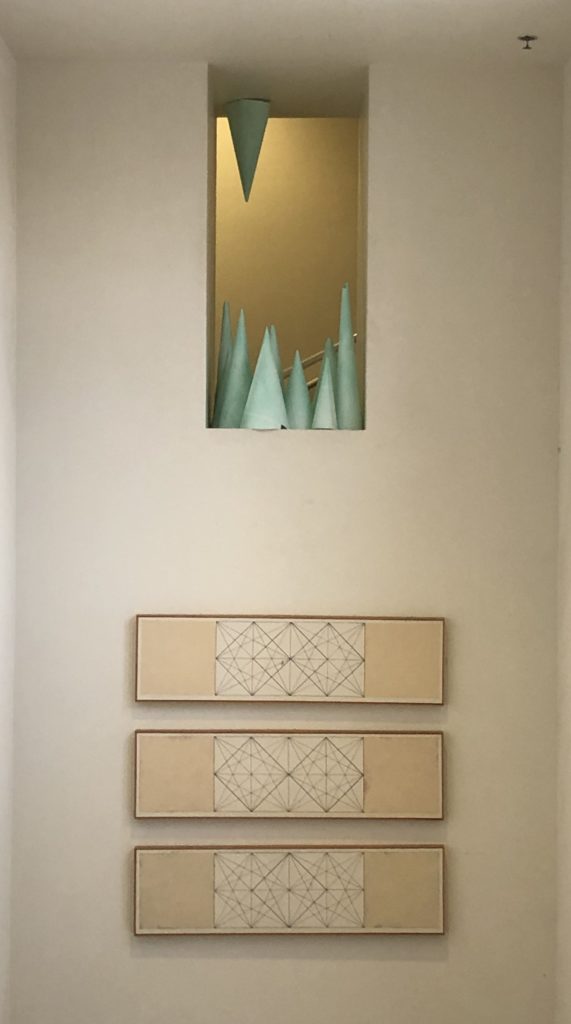
Student work in the alcove outside the Art History lecture room. The drawings below are by former faculty member Bob Jones.
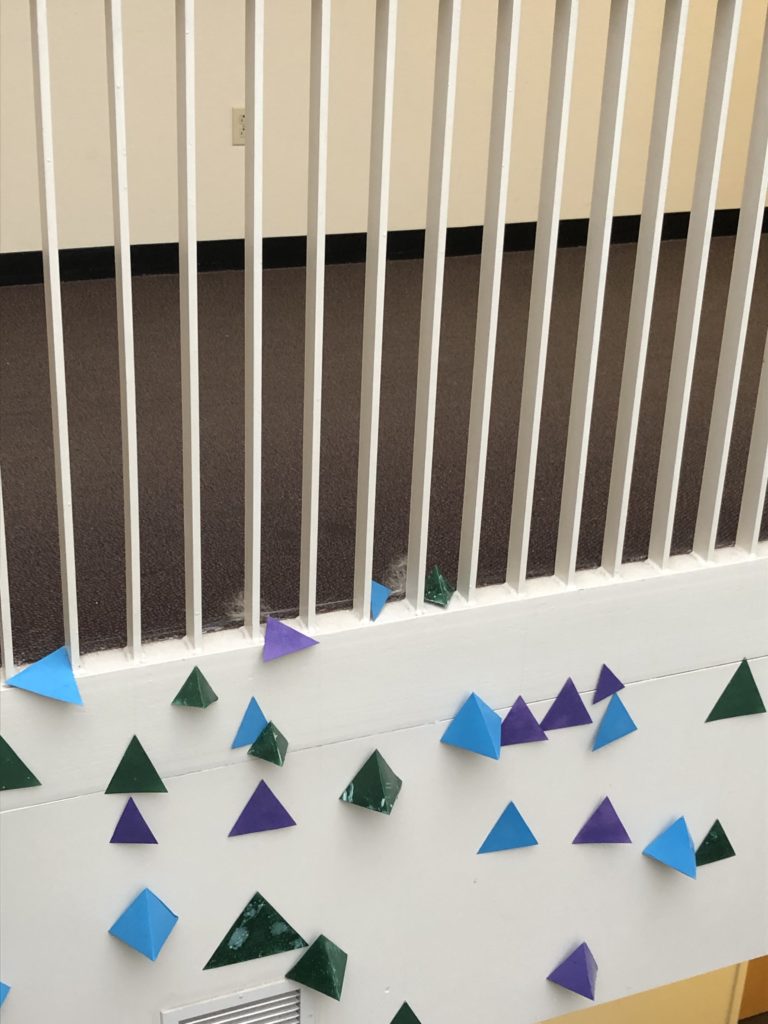 Professor Lindsey Dunnagan’s 3D Design class has been busy “art-ing up” Ophelia Parrish Hall.
Professor Lindsey Dunnagan’s 3D Design class has been busy “art-ing up” Ophelia Parrish Hall.
What is going on in the first floor hallway?
In case you have been wondering: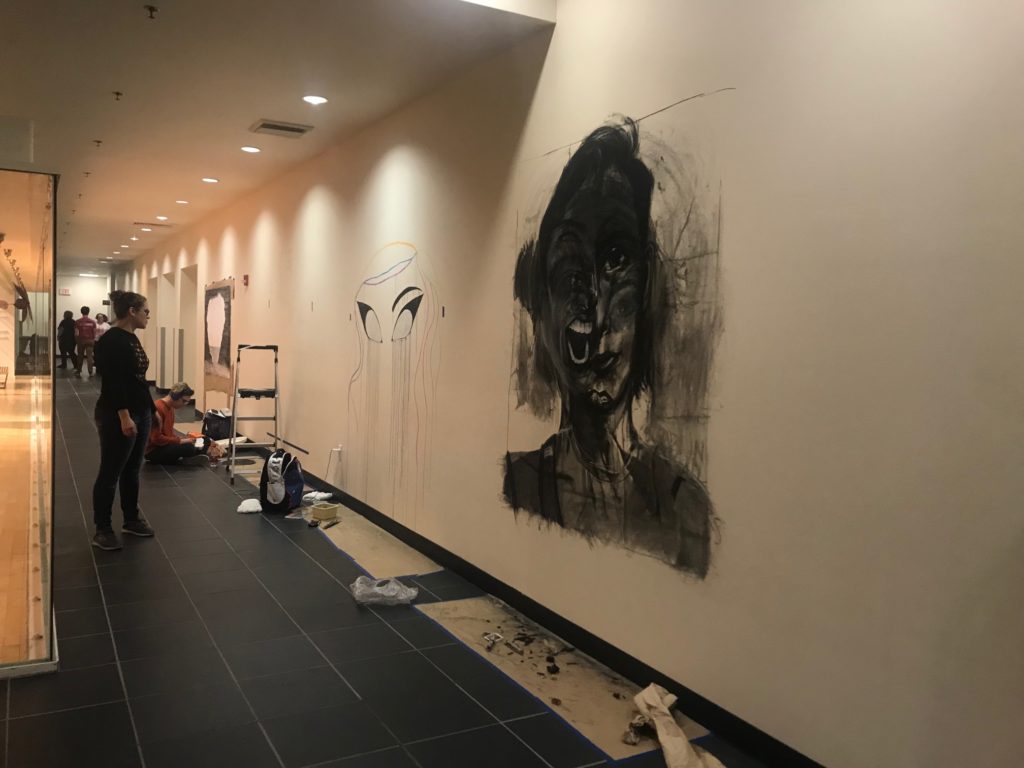
Laura Bigger sends this report:
Students in the Intermediate Drawings Explorations course are working on large-scale drawings on the walls in Ophelia Parrish near the gallery. Passersby have the opportunity to see work in progress through November 14th. Finished work will remain until late November. Make sure to check out the students’ work!
Second Annual Blow Stuff Up on the Quad Exhibition!
September 14th, 2018, was a bright sunny day with relatively little wind — the perfect day to showcase the work of Advanced Sculpture, as taught by Professor Danielle Yakle. As they did last year, students outdid themselves with playful over-life-sized toys taking over the great lawn between Ophelia Parrish and Baldwin Halls.
Alumni Artists to Visit Campus
Thanks to funding from the School of Arts and Letters we are happy to have Mimi Kato and Jimmy Kuehnle visit campus to give talks about their work. Both are successful artists, living and working in Cleveland, Ohio. We hope you will be able to join us to hear about their current creative work.
The flyer has an image from Mimi Kato’s work; an example of Jimmy Kuehnle’s work is below.
Art on Campus
Spring Semester Begins
We hope you are finally warming up from bitter cold winter break (in Kirksville New Year’s day saw a high of 4 and a low of -17 degrees!). As we are now one week into the spring semester of 2018, we begin the Art Blog by wrapping up some of Fall 2017’s news.
The first thing we want to do is to encourage you to investigate the new art installation to be found in front of the McKinney Health Center (between that building and the Kirk Building).
Professor Danielle Yakle (in the middle of the picture above, wearing a turquoise beret) wrote, in her proposal asking to install the sculpture in its current location:
Their (her Introduction to Visual Arts students) idea was to create an installation of enlarged human organs and systems. The various parts (a brain, heart, stomach, rib cage, etc.) will be assembled in the space much like an anatomical study. While being somewhat educational, the main concept is to recreate objects, which are normally soft and temporary, as something that is solid and long-lasting. The class was interested in the contrast between the ephemeral nature of the body compared to the hard and durable qualities of the concrete we are using for the sculpture. They hope to treat viewers to a surreal experience by positioning the interior of the body in an outdoor space.
These photographs (courtesy of Atticus Bailey) show the installation of the sculpture at the beginning of December. The pieces are made of concrete and many are attached to the ground with large metal spikes, which will help to keep them in place as they are climbed upon. Human body parts displayed include:
A brain – approximately 5’ long by 3’ high by 2.5’ wide
Two sets of ribs – 6’ by 4’ by 1’, connected with a bracket
A heart – 3’ by 3’ by 2.5’
A stomach – 5.5’ by 5’ by 2’
Two kidneys – 2.5’ by 1.5’ by 1.5’ each
Three lengths of large intestine – the largest is 7.5’ by 2.5’ by 2’
If you want to go by on a sunny day, the grassy space between Kirk and the Health Center seems to be a nice place to take in the view.
Hey! There’s an Aquarium in the OP Lobby!
Students in the Advanced Sculpture classes are at it again! For this Homecoming week, the lobby of Ophelia Parrish Hall is featuring blow-up animals, this time inside a fiber aquarium. The sculpture is made to walk through, and the animals are far larger than life-sized.
The art installation should be up throughout the week.
